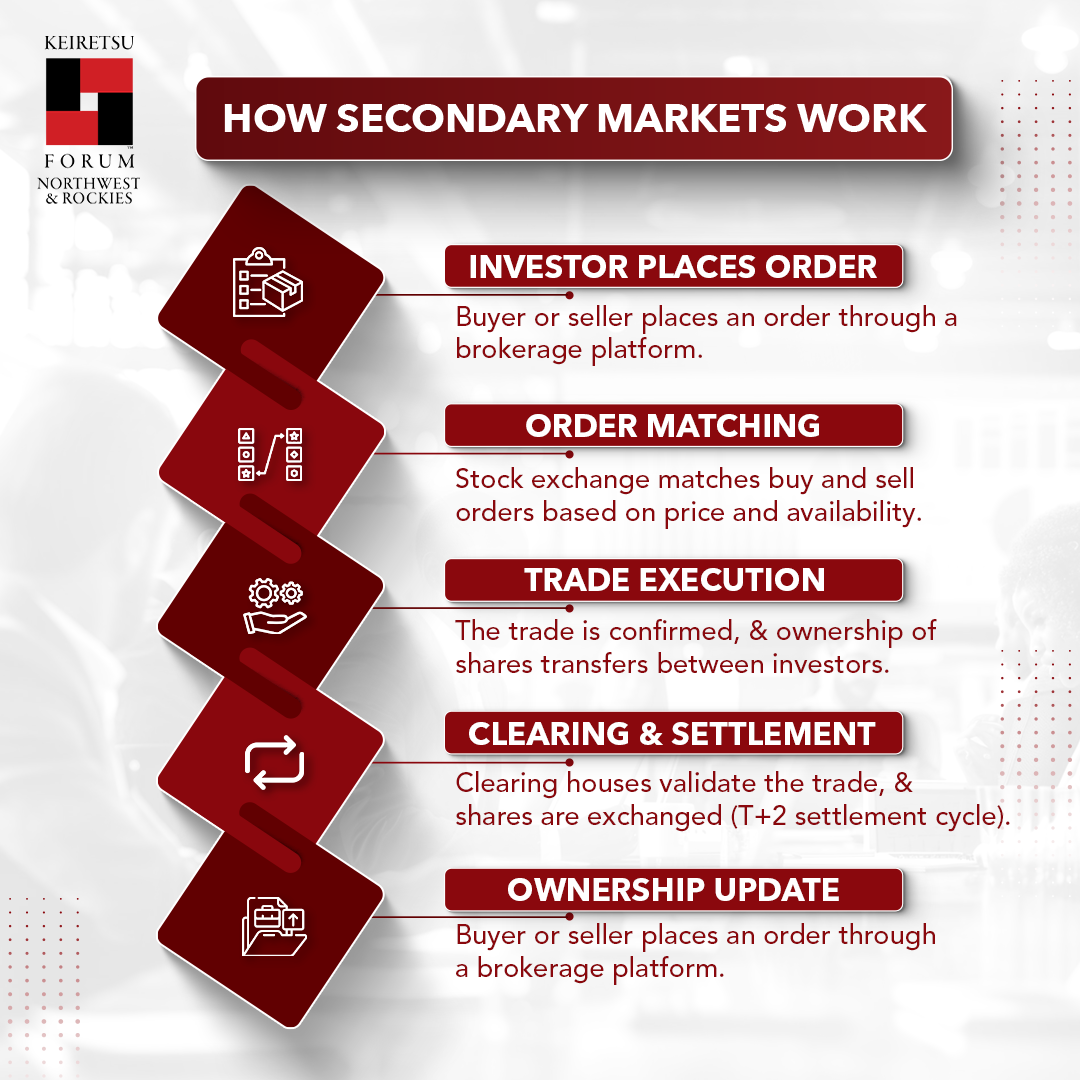
Imagine this: You are an angel investor in a promising early-stage company. You've nurtured it, watched it grow, mentored the team, and secured funding round after round. The anticipation is high—will the IPO skyrocket like Airbnb, or will it fizzle out like WeWork? Meanwhile, you hear whispers about the secondary market. Some investors are cashing out early, taking profits, and moving on. Others are holding tight, hoping for even bigger gains post-IPO. The big question is: what should you do?
Secondary markets have emerged as a powerful liquidity tool for angel investors and venture capitalists. According to Bain & Company's 2024 Global Private Equity report, the median return for secondary funds was higher than that of private equity, venture capital, real estate, and natural resources funds. In the first half of 2024, global secondary volume reached an impressive $68-71 billion, marking a 58-72% increase from the same period in 2023. This surge in activity has set the stage for what could be the highest year on record for closed transaction volume. Industry experts project that the total secondary market volume for 2024 could exceed $140-150 billion, surpassing the previous record of $132 billion set in 2021.
But are they the best exit strategy for you? Let’s dive in!
What Are Secondary Markets?
Before jumping into decisions, it’s essential to understand how secondary markets work. Traditionally, you wait for an IPO or acquisition to exit. However, secondary markets, platforms like Forge Global, EquityZen, Linqto, and Nasdaq Private Market, have changed the game by allowing investors to sell shares in private companies before they go public.
Here’s how it works:
-
Investors looking to liquidate their holdings list shares on these platforms.
-
Buyers, ranging from hedge funds to individual investors, purchase these shares at negotiated prices.
-
The company may impose restrictions or require board approval for these transactions.
Secondary markets offer an opportunity to cash out early, but not without risks. Investors who sold their stakes in secondary markets before a company’s IPO have seen mixed outcomes. Some made a fortune; others regretted selling too soon.
Success Stories
-
Investors in Stripe who sold shares via secondary markets saw significant returns before the company went public. Stripe's valuation grew from $20 million in 2011 to $50 billion in 2023, suggesting potentially large gains for angel investors.
-
SpaceX investors who sold shares in private transactions have seen substantial returns over the past decade. The company's valuation increased from around $12 billion in 2015 to $350 billion in 2024, indicating significant gains for early investors who exited via secondary markets.
Missed Opportunities
-
Investors who sold Airbnb in secondary markets before its IPO watched in shock as the stock surged 115% on the first trading day. Ouch.
-
Some early sellers of Databricks in private markets likely left money on the table as the company’s booming AI business continues to add value.
Unfavorable Outcomes
-
WeWork was once a hot secondary market pick. Those who sold at high valuations before its disastrous IPO avoided major losses.
-
Investors in Instacart who exited early ended up better off than those who held through its lackluster post-IPO performance.
Secondary markets can be a blessing or a curse, depending on timing and market conditions.
So, Should You Consider Secondary Markets?
Given secondary markets' strong performance and growth, you can consider entering this space. However, there are a few things to consider:
1. When Is the Right Time to Sell?
Timing is everything in the secondary markets, and it's a question that keeps many angel investors up at night. Sell too early, and you might miss out on massive gains. Hold too long, and you could see your stock value plummet faster than you can say "market correction." So, when's the ideal time to sell? Well, it's not an exact science, but there are some key indicators you should keep an eye on.
First, let's talk about valuation trends. If you notice that a company's valuation in private markets is slightly inflated compared to projected IPO pricing, it might be time to consider taking some profits off the table. Remember, public investors can be a tough crowd and might reassess the company's true worth quickly.
Market sentiment is another crucial factor. Suppose you're seeing IPOs in your sector struggling to gain traction. In that case, looking for a secondary market exit might be more prudent rather than waiting for a potentially risky public debut. For instance, in 2023, only 107 companies went public in the US, raising $19 billion, compared to 1,035 IPOs raising $668 billion in 2021. This stark contrast shows how market sentiment can dramatically impact IPO prospects.
Don't forget to keep a close eye on the company's performance. Is it experiencing strong revenue growth and profitability or burning through cash faster than a wildfire? According to CB Insights, 70% of tech startups fail, usually around 20 months after raising their last funding round. So, if you're seeing warning signs, it might be time to consider an exit.
2. What Can You Expect While Holding?
If you decide to hold onto your shares until the IPO, buckle up because you're in for quite a ride. It's like being on a rollercoaster, but it could last months or even years instead of a few minutes.
First off, be prepared for some severe IPO day volatility. Many companies see their stock surge initially, riding the wave of excitement and media attention. But don't pop the champagne just yet – prices often settle down after the initial frenzy fades. For example, in 2023, the average first-day return for US IPOs was 36%, but the average three-month return post-IPO was -6.8%, according to Renaissance Capital.
You might also find yourself in for a longer wait than expected. If the company delays its IPO, may end up holding onto those shares for months or even years longer than you initially planned.
3. How Long Does It Take to Sell in Secondary Markets?
Unlike public markets, where shares can be sold instantly, secondary market transactions can take a few weeks to several months. The timeline depends on:
-
Demand for the company’s shares.
-
The size of your stake (large positions may take longer to sell).
-
The platform’s transaction process.
-
Company-imposed restrictions on share transfers.
For investors seeking quick liquidity, secondary markets are faster than waiting for an IPO but slower than public market trades.
4. What If I Sell Now and Buy Later?
Some savvy investors employ a strategy of selling in secondary markets and then buying back shares post-IPO at a potentially lower price. It's like trying to time the market with a private company twist. While this can be a smart move, it's not foolproof.
When This Strategy Works:
Take Robinhood, for example. Investors who sold in secondary markets and bought post-IPO benefited as the stock declined from its initial highs. Robinhood's stock price dropped from its IPO price of $38 to around $6 within a year of going public. Those who sold early and bought back in later could have doubled their position for the same initial investment.
When It Backfires:
The cautionary tale here is Nvidia. Those who sold early shares of Nvidia before it went public missed out on one of the biggest tech stock rallies in history. Nvidia's stock price has increased by over 351,244% since its IPO in 1999. Imagine selling your shares early and watching from the sidelines as the stock skyrocketed!
It's also worth noting that this strategy comes with its risks. You might miss out on pre-IPO appreciation, face difficulty timing your re-entry, and incur additional transaction costs and potential tax implications.
Ultimately, whether you decide to sell now and buy later depends on your risk tolerance, belief in the company's long-term prospects, and ability to accurately assess market conditions. It's a strategy that can pay off big time, but it's not without its risks. As with all things in investing, there's no one-size-fits-all approach. It's about finding what works best for your individual situation and goals.
Moral of The Story – Do Your Homework!
Secondary markets have transformed the way investors approach liquidity in pre-IPO companies. While some have walked away with massive profits, others have regretted selling too soon. The key to making the right move lies in understanding market conditions, company fundamentals, and your own financial goals.
So, should you sell in the secondary market or hold for the IPO? The answer isn’t black and white. But with the right strategy, you can maximize your returns and minimize regrets.
References:
https://www.commonfund.org/cf-private-equity/the-secondary-market-is-vaulting-over-prior-records
https://kpmg.com/us/en/articles/2024/ipo-insider-2023-perspective.html
https://stockanalysis.com/ipos/2021/
https://www.ideagen.com/thought-leadership/blog/2021-ipos-auditor-market-share-and-stats
https://www.renaissancecapital.com/review/2023USReview_Public.pdf
https://companiesmarketcap.com/hkd/robinhood/stock-price-history/
https://www.commonfund.org/cf-private-equity/the-secondary-market-is-vaulting-over-prior-records
https://microventures.com/unlocking-value-the-benefits-of-investing-in-secondaries
https://fastercapital.com/topics/case-studies-of-successful-angel-investments.html


